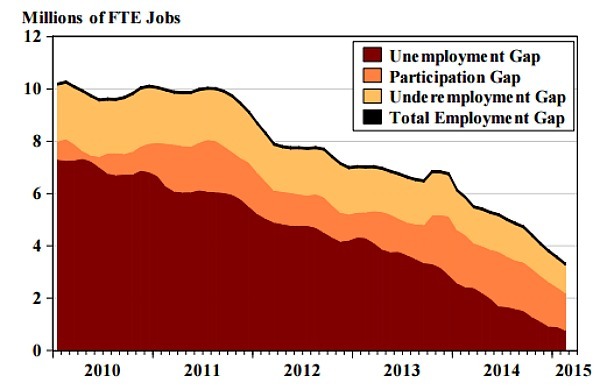Perhaps you read the article published a couple months ago by Jim Clifton, the CEO of Gallup, construing the commonly quoted unemployment rate was a “big lie.”
It has caused quite a bit of controversy, and there have been numerous articles written over the last couple of months trying to make sense of Clifton’s conspiratorial tone.
Of course, in one sense Clifton is right. The unemployment rate is an odd metric only giving us a small perspective on the job market. It even tells us less about the overall economy.
What’s really going on—especially as it relates to the real estate industry? We’ll tackle this issue today.
Unemployment Rate Definition
In simple terms, the commonly quoted unemployment rate reflects the number of people who are actively looking for a job and can’t find one.
It’s an odd thing to measure because it is difficult to zero in on what “actively looking for a job” really means.
If a person is looking for a job today and doesn’t have one, he’s unemployed. If the same person decides to stop looking for a job tomorrow, he’s no longer unemployed.
To make things more confusing, the unemployment rate is NOT really correlated to the employment rate (commonly called the labor force participation rate).
The working age (16 to 64) labor participation rate is currently about 63%. This means 37% of the eligible workforce is not working (about 50 million people).
The Full-Time Employment Gap
Intuitively, you probably know many of these 50 million people who are not participating in the workforce don’t want to be employed. (ex. students, stay-at-home parents, early retirees, etc.)
Also, many of these individuals are satisfied working part-time jobs, or may not be able to work full-time because of a disability. Some of these people are just lazy and happy to survive on the good will of family members or government subsistence programs.
To address all these nuances, some economists are starting to talk about a new metric called the full-time employment gap. A recent article in the Washington Post described it this way:
[The full-time employment gap is affected by] how low the unemployment rate is versus how low we think it could go, how high the participation rate is versus how high we think it could go, and how many people can only find part-time jobs.
That first part tells us how much further unemployment itself could fall, the second how many discouraged workers could come back, and the last how many people would work more if they could.
In other words, it shows us the gap between how many full-time jobs we have and how many full-time jobs we need.
The article goes on to demonstrate how the “full-time employment gap” is currently 3.5 million jobs.
Full-Time Employment Gap and Real Estate Recruiting
If you only looked at the official unemployment rate (5.5%) it would appear that the labor market is only about one million jobs short for full employment. In reality, it’s 3.5 million full-time jobs short of full employment.
Where are the other 2.5 million people?
Most of them are working part-time jobs, languishing in their careers, and wishing they could find opportunities for something better.
Some of these individuals would make great real estate agent candidates. They’re working already, but they have a strong motivation to make a change to better their lives.
By engaging those in the full-time employment gap, you’ll not only be helping yourself hire more new agents, you’ll be able to provide assistance to those who have a desire to better their careers.
I think we can all agree, this is a purpose worth supporting.
Questions or Comments? Reply to your WorkPuzzle subscription email.
Didn’t get the WorkPuzzle email? Subscribe below. We promise not to share your email with others or use it for any other purpose but delivering WorkPuzzle notices.




